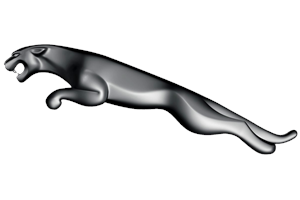


This edition of the Jaguar XJ 12 5.3 is the 4 speed / Manual version and was first brought out in 1972. This was at around the same time as the introduction of the 1973 Monteverdi Hai 450 GTS and the 1973 Ferrari 365 GTB/4 Daytona.This particular Jaguar XJ has a 5344cc Naturally Aspirated Petrol powerplant with 12 cylinders in a V formation.
The XJ shares its Petrol V12 engine configuration with the likes of the 2021 Aston-Martin Valkyrie Spider 6.5 V12 and the 2021 Aston-Martin Valkyrie Coupe 6.5 V12. If you're looking for other fast cars which share the XJ's Rear Wheel Drive, Saloon combination then how about the 1982 Fiat X1/9 1.5 8V or the 1965 Aston-Martin DB6 1965.
Weighing in at 1870 kgs (4122 lbs) this makes the Jaguar XJ 12 5.3 in the same weight category as the 2023 Aston-Martin DBS 770 Ultimate 5.2 V12 Twin Turbo or the give or take 50kg.
In terms of power the 5344cc 24V V12 engine produces 265 bhp (197 kW) @ 6000 rpm similar to the 2022 Hyundai i30 N Performance 2.0 Turbo (276 bhp) or the 2021 KIA K5 GT 2.5 Turbo (290 bhp).
The Naturally Aspirated V12 throws out 301 lb-ft (408.1 Nm) @ 3500 rpm placing it with cars of similar torque performance figures such as the 2023 Toyota Corolla GR Morizo Edition 1.6 Turbo (295 lb-ft) or the 2023 Porsche Cayenne E-Hybrid 3.0 V6 Turbo (310 lb-ft).
If one combines the weight with power or torque performance for the Jaguar XJ you can get a better idea of it's real world performance.
![Ford Sierra Sapphire RS Cosworth 4x4 - [1990] image Ford Sierra Sapphire RS Cosworth 4x4 - [1990] image](/editionimages/979.jpg)
The 1990 Ford Sierra Sapphire RS Cosworth 4x4 (166.6 bhp per ton) has similar Bhp Per Ton stats as the Jaguar XJ.
The Jaguar XJ has a Power to weight ratio of 141.7 bhp per ton and 160.9 lb-ft per ton. Bhp Per Ton figures of the 1972 XJ competing with the 1990 Ford Sierra Sapphire RS Cosworth 4x4 (166.6 bhp per ton) or the 2020 Maserati Ghibli GranSport Petrol Hybrid (166.6 bhp per ton).
If you agree with the late great Carroll Shelby then arguably an even better indicator of potential performance, Torque. Use weight as well and you end up with - Torque per ton, with the Jaguar XJ generating around 160.9 lb-ft per ton. If you're curious as to what other cars have as much torque to weight then look no further than the 2004 Jaguar S Type 2.7d V6 Sport (185.8 lb-ft per ton) or the 1964 Lamborghini 350 GT 3.5L V12 (185.8 lb-ft per ton).
With a 0-60mph time of 7.50 secs or a 0-100km/h (0-62mph) of 7.7 secs, this made the Jaguar XJ 12 5.3 as fast as the 2020 Audi A1 A1 Sportback 35 TFSI S tronic S line (7.50 secs) the 2019 Ford Focus ST 2.0 EcoBlue Wagon (7.50 secs) the 2017 Subaru Forester 2.0 XT Premium (7.50 secs) the or the 2017 Volkswagen-VW Golf GTD Variant 2.0 TDi DSG (7.50 secs). This Jaguar XJ 12 5.3 is also faster than the 2013 BMW i3 0.6l Hybrid (7.60 secs) the 2011 Fiat Punto Evo Abarth 1.4 Turbo (7.60 secs) the 2011 Abarth 500C 1.4 Turbo (7.60 secs) the and the 2010 Peugeot 308 1.6 GTi (7.60 secs).
When talking about the performance of the Jaguar XJ on the drag strip it can reach a quarter mile in an estimated 15.62 secs @ 87.6 mph. Similar performance down the quarter mile can be found with the the 2002 Lotus Elise S2 1.8 111S (15.55 secs), the 2017 Volkswagen-VW Arteon 2.0 TSI 4Motion (15.56 secs), and the 1972 Lamborghini Urraco 2.5L V8 P250 (15.57 secs).
Modern performance cars are often artificially restricted to 155mph. The 1972 version of the Jaguar XJ 12 5.3 has a maximum speed of 145mph.
If maxing out your car on the AutoBahn is your thing and you're wondering what's faster than the 1972 Jaguar XJ 12 5.3 then how about the 2007 Lotus 2-Eleven 1.8 Supercharged (156 mph), the 2003 Ford Mustang Mach 1 (156 mph), or the 1999 Nissan Skyline R34 GTR (156 mph).










Ford Focus RS 2.3 Turbo
Engine: Turbo Petrol | 2261cc 16v St4
Top Speed: 165 mph
0-60mph: 4.50 seconds

Porsche 911 Turbo S 993
Engine: Turbo Petrol | 3600cc 12v F6
Top Speed: 296.1 kph
0-100kph: 4.0 seconds



















